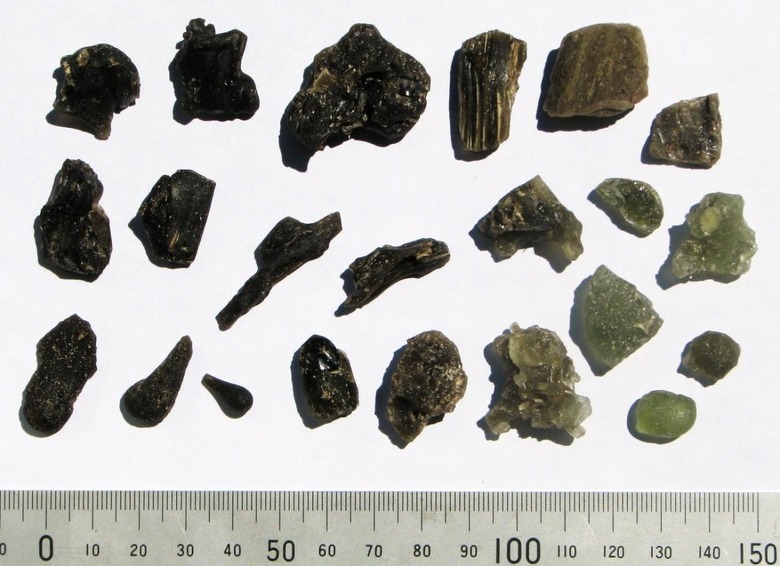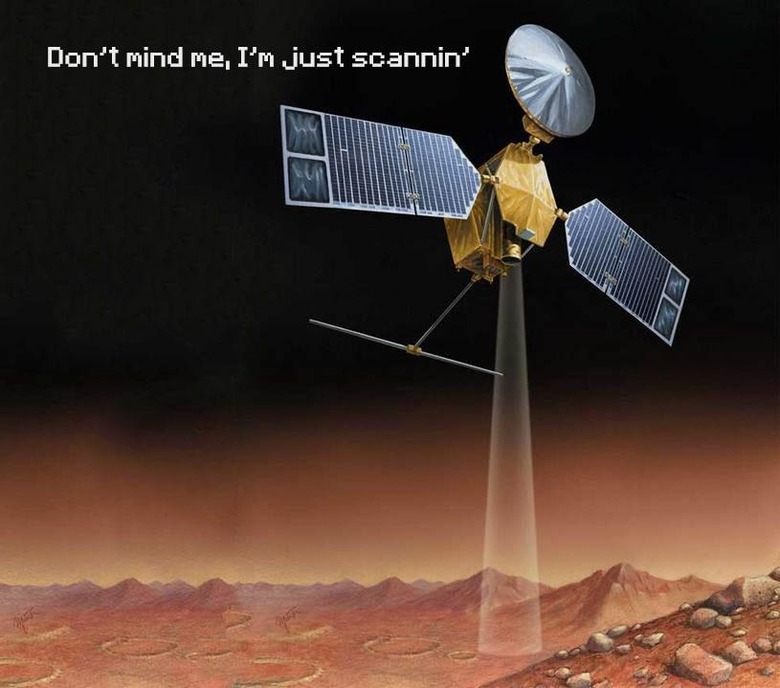Life On Mars May Be Preserved In Meteorite-Made Glass
A paper released this week by K. Cannon and J. Mustard shows how ancient life on Mars could be preserved by meteorite glass. Impact glass, or glass-rich impactites, have the ability to both encapsulate and preserve biosignatures on Earth. Because of this, these scientists show how Mars may have bio-rich preserves that rovers on Mars may not have even begun to explore. While we've been looking for signs of life – or ancient life – on Mars for many years, we might just have not been looking in the right place!
While it's not likely that tiny green men will be preserved in glass made by meteorites on Mars, it is possible that biosignatures could linger. The team here show that signs of impact glass do exist on Mars – exciting due to the possibility of signs of ancient life inside.
Above: "Calcidiscus leptoporus 05" by Hannes Grobe (talk), Alfred Wegener Institute – Own work. Licensed under CC BY 3.0 via Wikimedia Commons.
Biosignatures are substances that provide proof of past or present life. In this case, that means molecules of life – even the smallest signs of ancient life. A greater chance is found here, in glass preserves on Mars, of finding ancient life than in most areas around the planet.
Better here than in dust, anyway.
Below: "Darwin glass" by Zamphuor – Own work. Licensed under CC BY-SA 3.0 via Wikimedia Commons.

The scientists responsible for the research we're seeing today suggest that the metastable glass-rich impacts they've quite possibly found would be preserved by "the cold and dry martian climate during the Amazonian period." Because of this, signs of ancient life could very well be trapped inside.
Using data from the Compact Reconnaissance Imaging Spectrometer for Mars on NASA's Mars Reconnaissance Orbiter (MRO), this team have presented a remote compositional survey of probable impactites in well-preserved craters.
They're out there.

"Glasses tend to be spectrally bland or weakly expressive, so signature from the glass tends to be overwhelmed by the chunks of rock mixed in with it," said Mustard.
"But Kevin found a way to tease that signal out."
The results this team have collected, they suggest, "lend concrete support to theoretical arguments suggesting that impact glass has formed in abundance on Mars, both inside of craters and as spherules in distal strewnfields."
"The researchers' analysis suggests glass deposits are relatively common impact features on Mars," said Jim Green, director of NASA's planetary science division at the agency's headquarters in Washington.
"These areas could be targets for future exploration as our robotic scientific explorers pave the way on the journey to Mars with humans in the 2030s."
Remember this when the rovers that rove the martian landscape seek out glass in the near future.
Therein may be the next tangible signs of ancient life.
See more information on this subject in the paper Preserved glass-rich impactites on Mars by Kevin M. Cannon and John F. Mustard. This paper goes by code doi: 10.1130/G36953.1.
